A Beginner’s Guide to Korean Food: 17 Must-Try Dishes
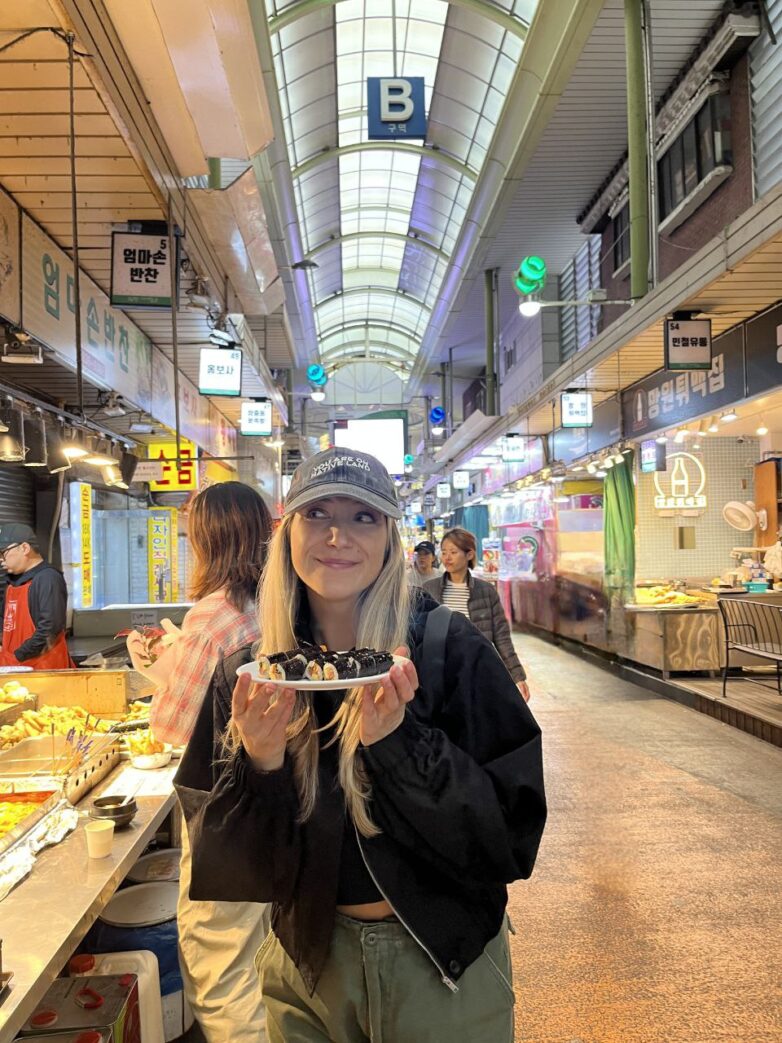
I spent four months in Korea, and I feel like I barely scratched the surface on the food here!
The biggest thing I noticed was just how “Americanized” any type of Asian food is back home. I’ve had Korean BBQ before, but it honestly paled in comparison the having it in Korea.
In my experience, I found there to be two main categories of Korean food: the fatchy, unhealthy, comfort food, which generally comprised of glutineous noodles, copious amounts of melted cheese, meat, and fried dough, and the traditional Korean food, where you can find upwards of 10 dishes per meal, hearty soups, fish, and fermented veggies.
Both were delicious, but I found that I enjoyed the traditional Korean food, known as Hak Shik much more compared to the fatchy stuff.
Some fun facts about Korean food:
🍙 Non-fermented veggies, fresh greens, and fruit are hardly used in Korean cuisine, and they were soooo expensive to buy in the grocery store! (They also weren’t very tasty, to be honest).
I think both the price and the flavor was due to the fact that most produce isn’t grown in Korea – there’s not enough land for it – and the time and cost of shipping from other parts of the world play a huge role.
I saw a regular pint of strawberries go for $21USD. Apples were generally 2 for $10USD. Not ideal.
🍜 Most of the meals I ate out alone ranged from $5-$8USD on average. When splitting a meal with a friend, there was generally more food, but it didn’t go over $15USD typically.
I would spend less eating out than I would on groceries!! Total opposite of how it is back home.
🍙 There’s sugar in everything, and salt in nothing. Many random foods, especially convenience store snacks, are weirdly sweet, but there’s no salt to be found anywhere. I actually bought a bag of salt when I first got there, and no matter where I traveled to, I made it fit in my suitcase. I would even salt the chips I bought at the convenience store, because seriously, there was no salt!
Koreans believe salt has something to do with bloating, although in western culture, I feel like most people believe sugar causes bloating and weight-gain. It was really interesting to see the different perspective on this, but I definitely missed having salty chips as a snack. 😊
Some tips for eating out at Korean restaurants
🍜 Tipping isn’t practiced in Korea. If you try to tip it’s actually considered rude, because they view it like you pity them and feel they need extra money, which they take offense to.
🍙 Silverware and napkins are found in a little side drawer that’s part of the table, so always check there first before asking the server.
🍜 Sometimes you’ll get a little water cup and a carafe of water on the table, other times there will be a water filter and cup station, usually in some corner of the restaurant. This is always free.
🍙 Depending on what you’re eating, there will sometimes be tools like scissors and tongs in a bucket on the table, along with a little empty bucket. The empty bucket is for bones and meat discard – many Korean dishes require some dismantling. I think you can throw your napkins in there too, but I’ve noticed my Korean friends usually just ball up the used napkins on the table and wedge them under plate or just leave them in plain sight.
🍜 Get used to eating with chopsticks and spoons. I was too proud to ever ask for a fork and knife, so I’m not sure how many restaurants carry them. When eating meals that required hands, Koreans always wear gloves! I found this so odd when I first came to Korea, but really, it just makes sense. Koreans are very clean people, and getting their hands dirty with sticky fried chicken sauce or taco juice was a no-no. I usually entertained my friends with my dirty westerner ways of eating. It’s hard wearing gloves if you’re not used to it, okay? (*laugh crying emoji)
🍙 Customer service isn’t a thing in most Asian countries, and Korea is no exception. Once you’re ready to order, you’ll have to flag the server down. It’s helpful to know a bit of Korean, so you can just call out to them. It’s not considered rude, so don’t worry! When I was with Korean friends, the server would take our order across from the restaurant, and they’d have a quick yelling exchange of information, because it was loud and busy in the restaurant. (Koreans move at a quick pace, so if they don’t come to your table to take your order don’t be surprised.) Once you’re eating, the server won’t ask how the food is or if you need anything, you’ll have to wave them down or call out to them again.
🍜 When it’s time to pay, this is almost always done at the front of the restaurant at the host stand. There have been a few places where they have a handheld credit card machine, but usually you just go to the front. Servers will usually place the bill on the table once you’ve ordered, and then you take it to the front with you when you’re ready to check out. Again, reminder to not tip! 😊
🍙 A lot of Korean cuisine is very foreign if you’ve never tried it before, and if you don’t know how to eat it, either look it up on Youtube, or just look around you. I learned so much about eating Korean food just by sneaking glances at the people around me, and copying what they were doing.
Without further ado, here’s a roundup of some of my favorite Korean dishes!
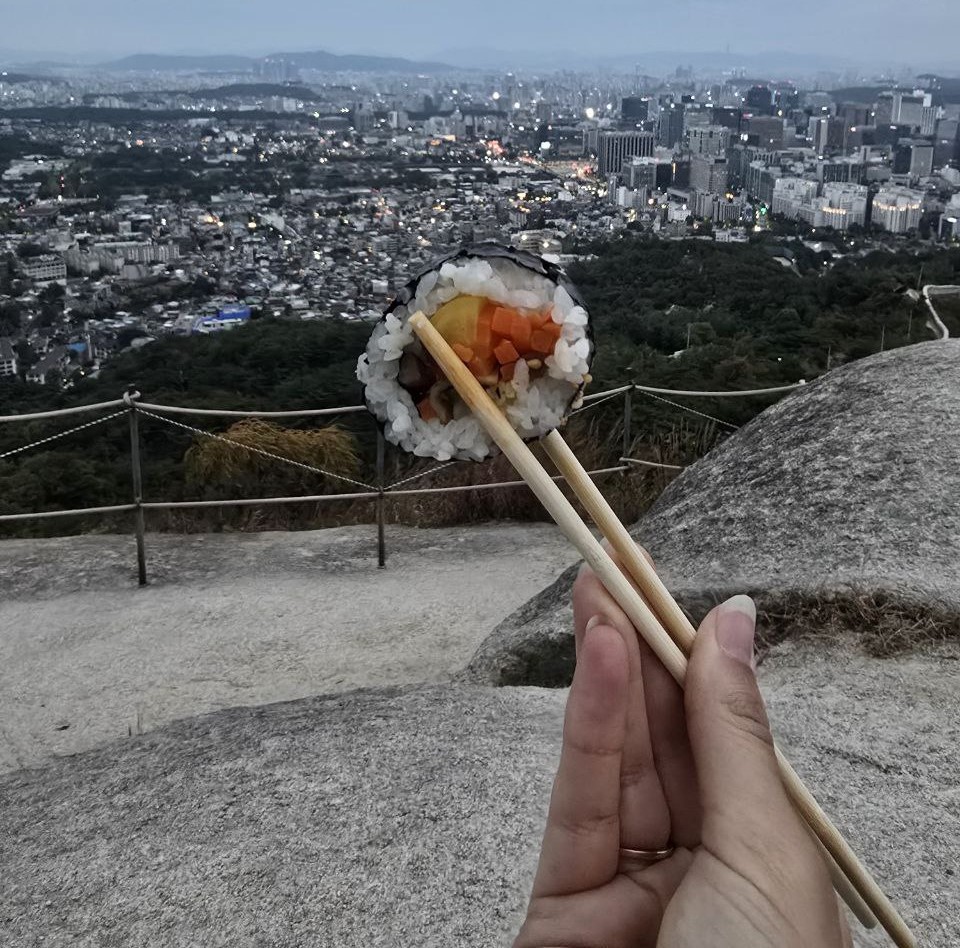
1. Kimbap (김밥) – rice, veggies, and usually tuna or spam rolled in seaweed paper. Yes, it’s similar to sushi. And yes, Koreans will get offended if you compare it to sushi. 🫠 Kimbap was one of my favorite meals because it was so common to find anywhere and incredibly cheap. One giant roll was typically around $3USD.
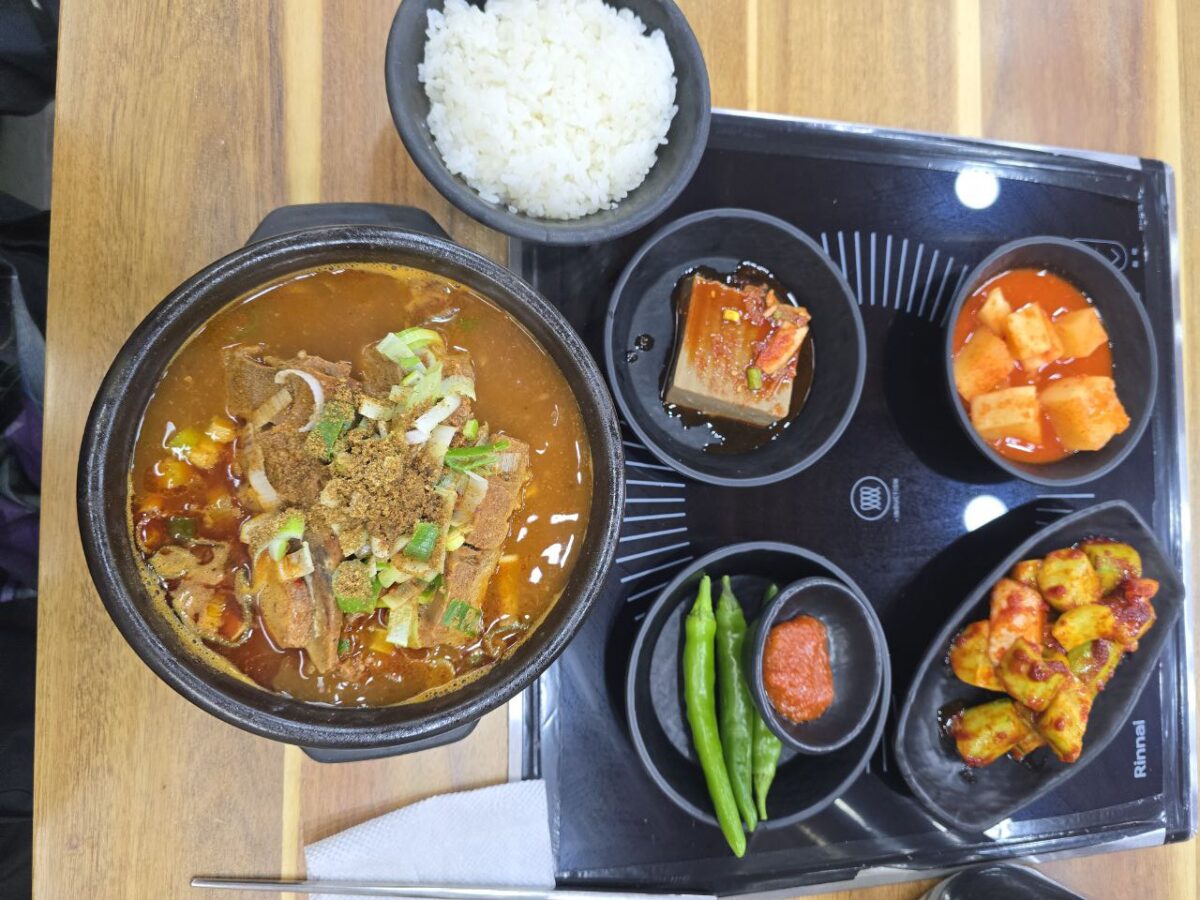
2. Bbyeodagwitang (뼈다귀탕) – aka hangover soup. This pork on-the-bone soup is spicy, greasy, and perfect after a night of drinking. It’s no easy feat to remove the meat from the bone with chopsticks and tongs, but it’s still my favorite Korean dish. This is prime meal example of when to use the trash bucket.
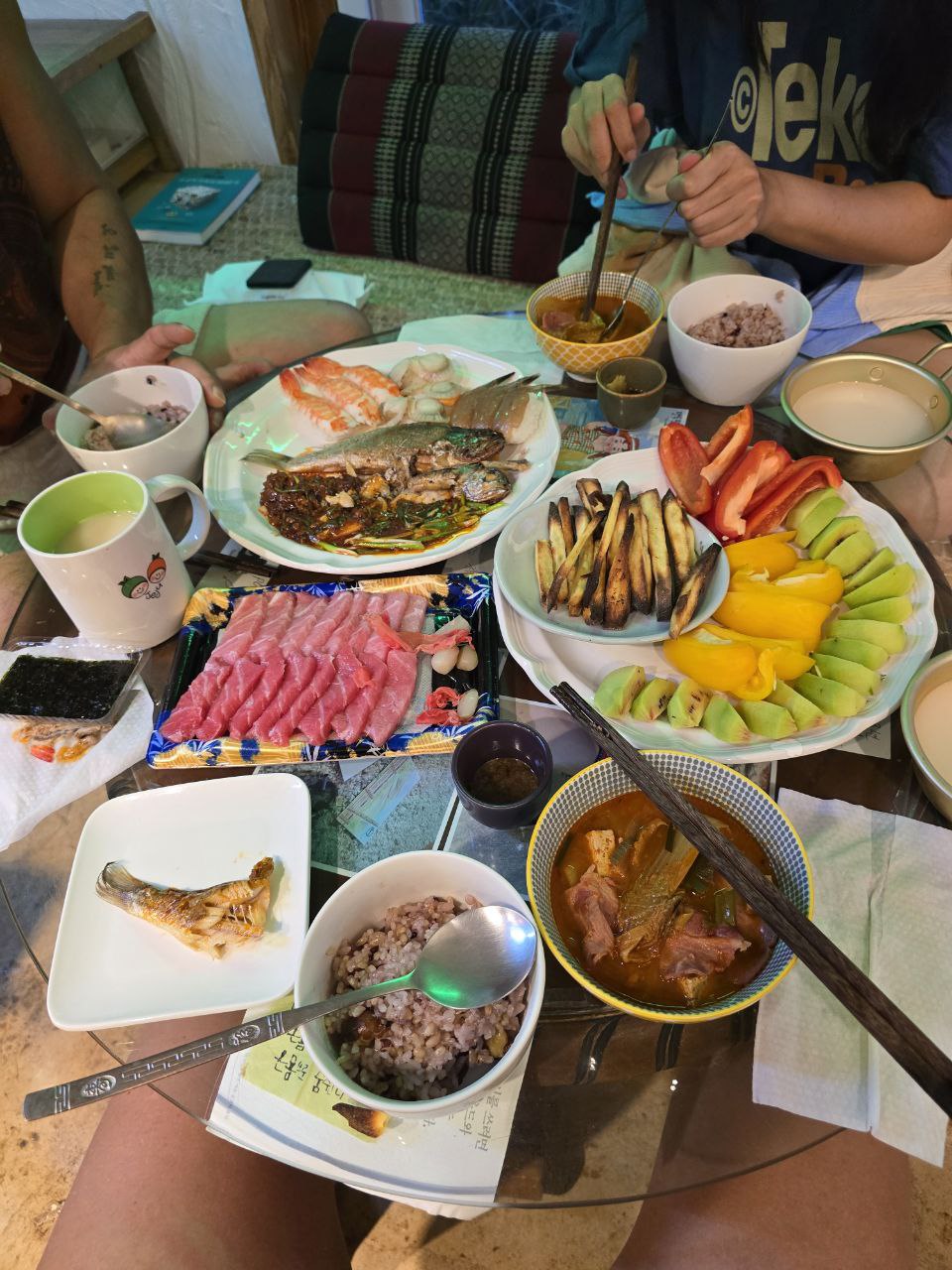
3. Home cooked meal by the best Airbnb host consisting of fried fish, sweet potato fries, veggies, rice, fresh kiwi, fish jerky, and more. Fish is very common in korea and there were so many different kinds of white fish that I tried, but I honestly don’t know the names of any of them.
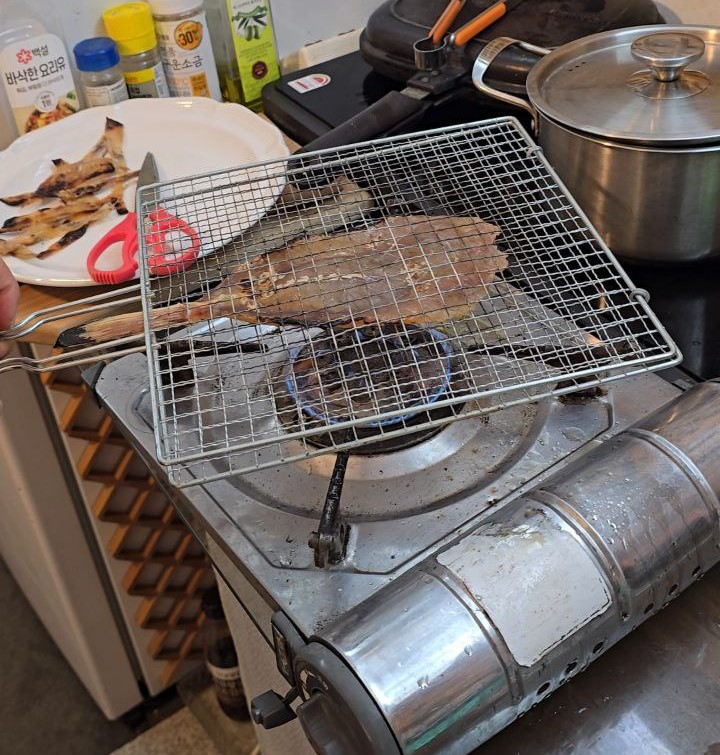
4. Jwipo (쥐포) – Fish jerky. Sounds weird but it was so good, especially with spicy mayo dipping sauce The dried fish was a common find in grocery stores all over the country.
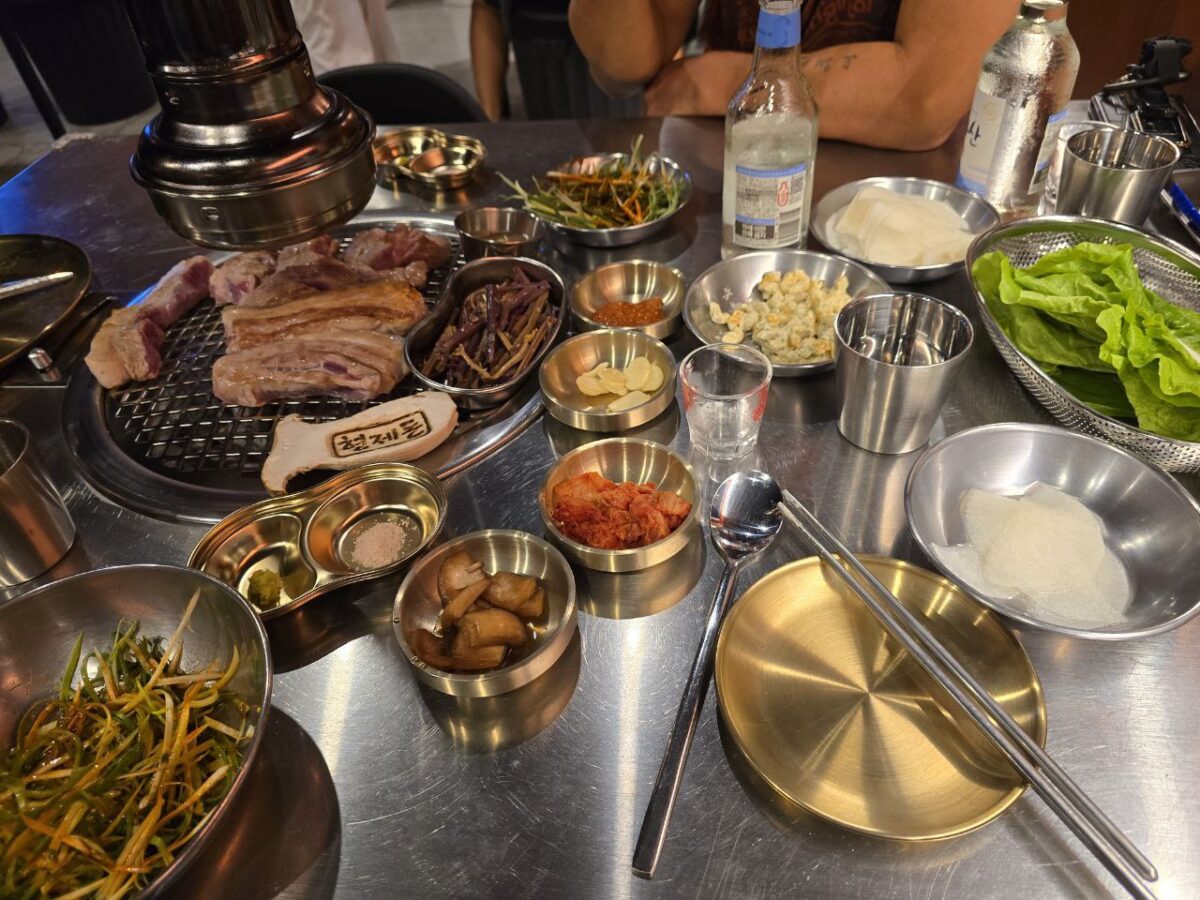
5. Samgyeopsal (삼겹살) – pork belly BBQ. Very famous Korean dish. BBQ always comes with lots of little sides to pair with the meat. My friends showed me lots of combinations. The green leaves are called, 깻잎, aka perilla leaves, which I’ve never had before, but are commonly used with various Korean bbq dishes. You wrap the meat in the leaf along with some of the other veggies. Try adding a small glob of wasabi on top for added punch, (never dipped in the wasabi, always placed directly on top haha)
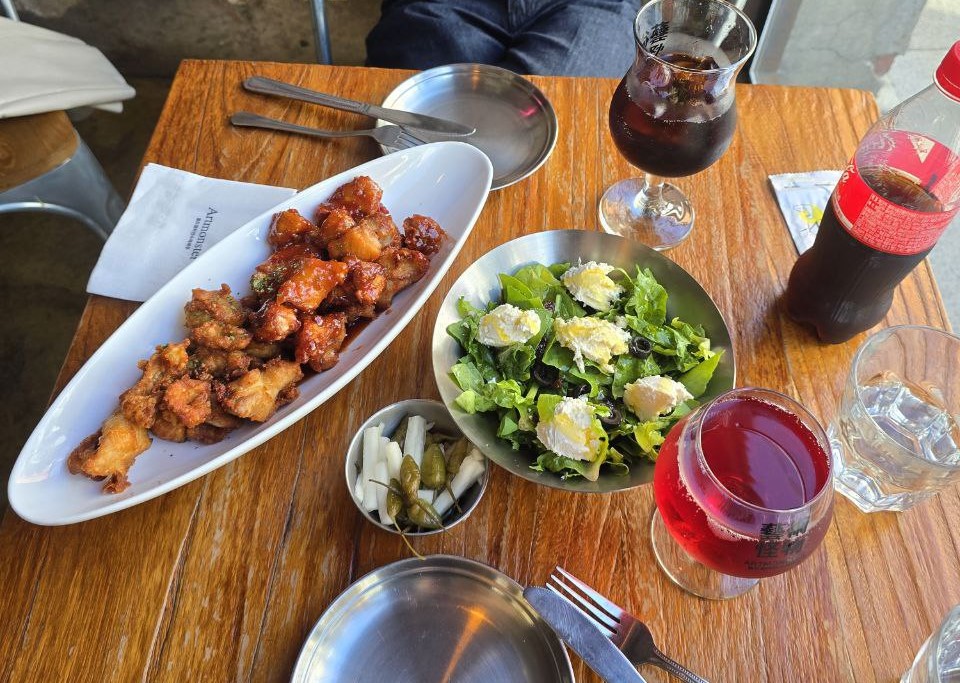
6. Fried chicken (치킨) – this is another popular dish! There are lots of different flavors, but they are all fried. I didn’t come across any grilled chicken my entire time in Korea.
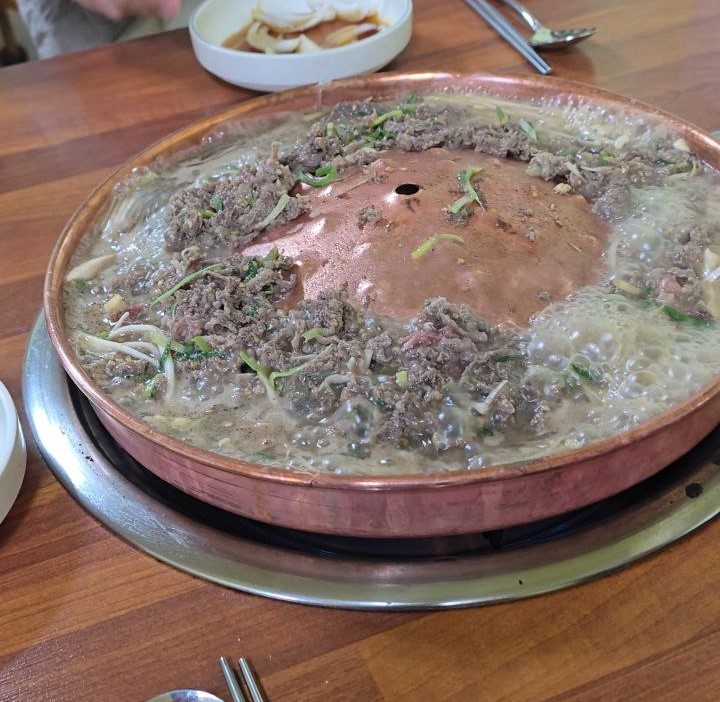
7. Bulgogi (불고기)– another Korean classic. Thinly sliced beef cooked in a sweet soy sauce with glass noodles and bean sprouts. This bulgogi was also served with 깻잎, and a dipping sauce with raw onions, and rice. Most bbq/hot dishes come with rice automatically.
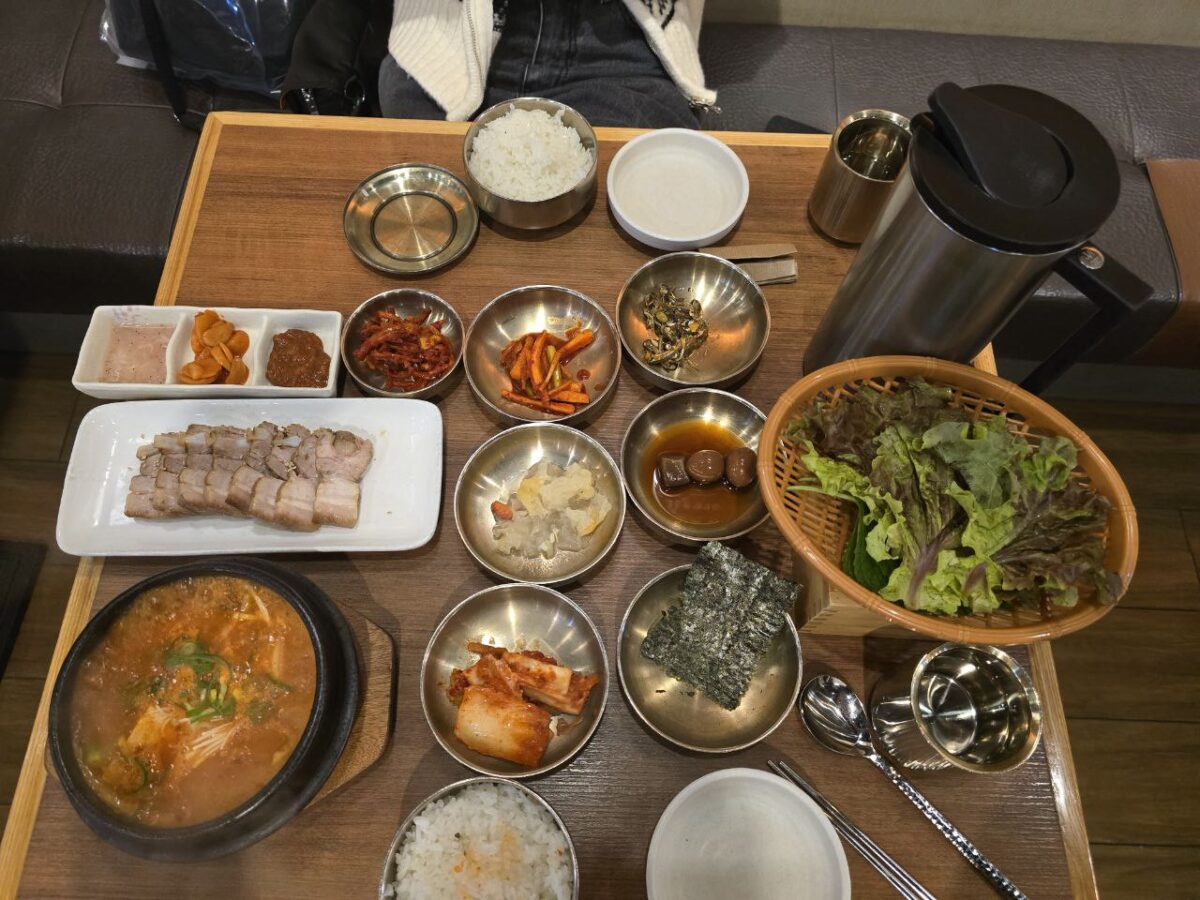
8. Kimchi Jjigae (김치찌개) + Bossam (보쌈) – This spicy, savory stew is made with aged kimchi, tofu, pork (or tuna), and a rich, flavorful broth, and Tender, slow-boiled pork belly sliced up and served with fresh cabbage or lettuce wraps, plus a side of spicy radish salad and ssamjang (savory dipping sauce). Simple, but insanely delicious.
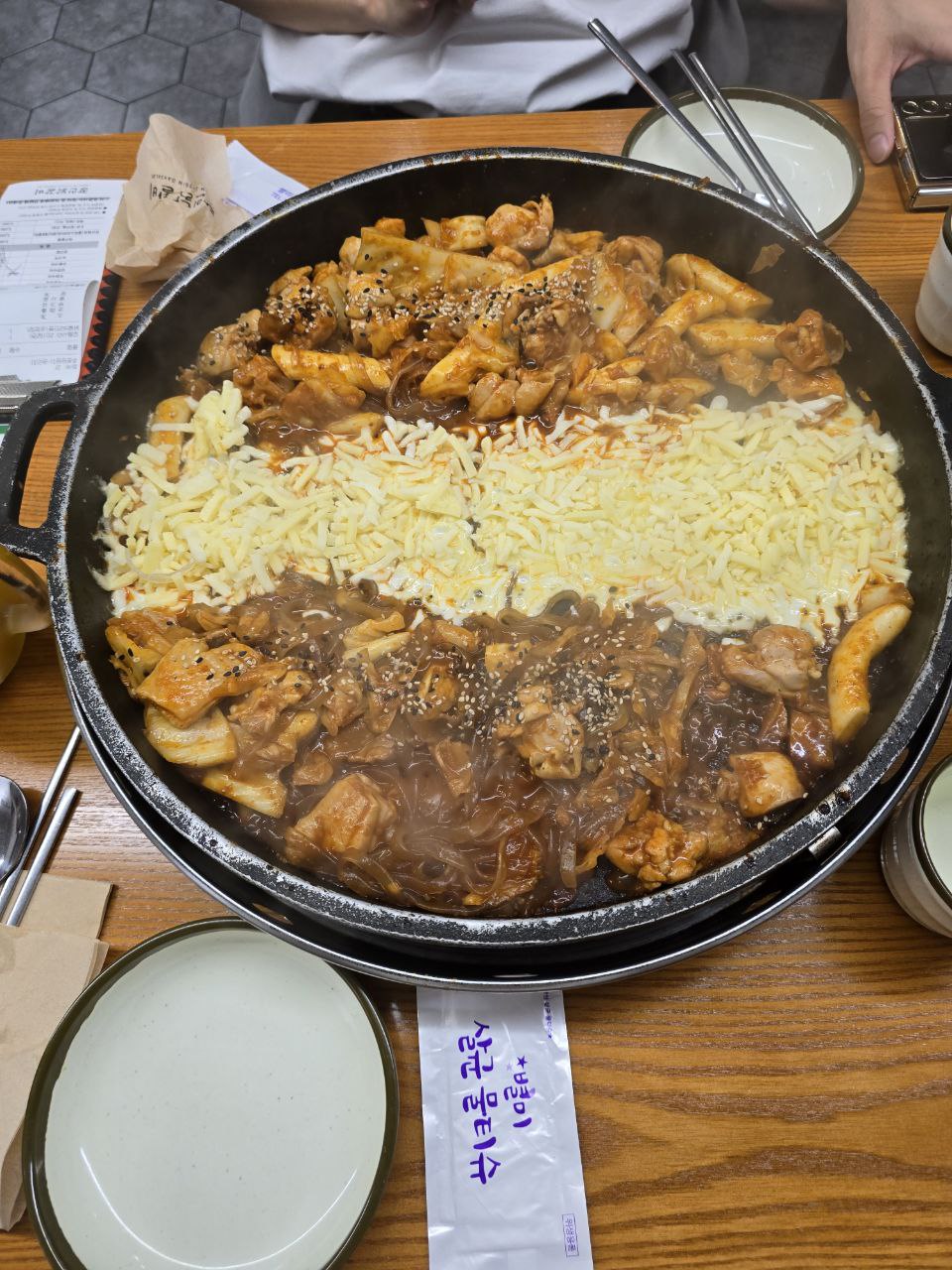
9. Buldak (불닭) – If you love spice, this one’s for you! Buldak (aka “fire chicken”) is smoky, spicy, and packed with flavor, thanks to its gochujang-based sauce. Served with melted cheese, rice noodles, and tteobokki. 🔥

10. Croffle (크로플) – A trendy fusion treat combining a croissant and waffle, croffles are very popular in Korea. They are buttery, flaky, and crispy, often topped with powdered sugar, whipped cream, or fruit for a deliciously sweet snack. As a chocolate lover, I got mine with Nutella. 😊
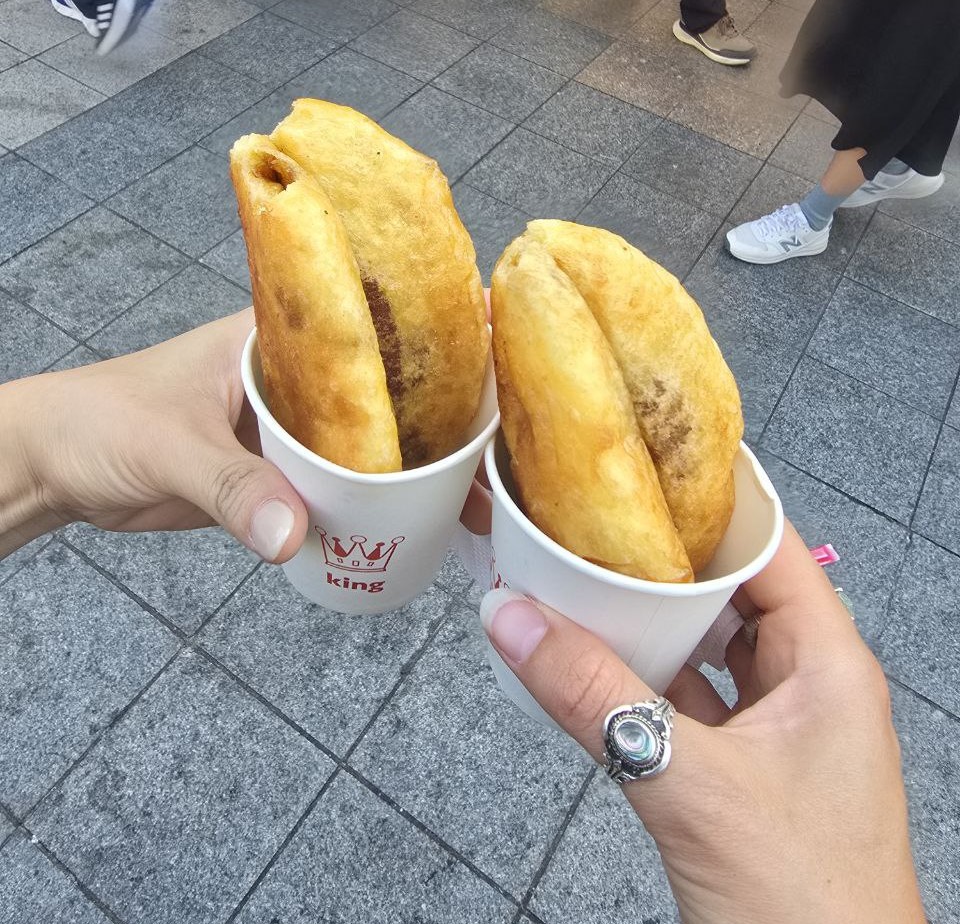
11. Hotteok (호떡) – A beloved Korean street food, hotteok is a crispy, chewy pancake filled with a warm, gooey mixture of brown sugar, cinnamon, and nuts, perfect for satisfying a sweet tooth on chilly days.
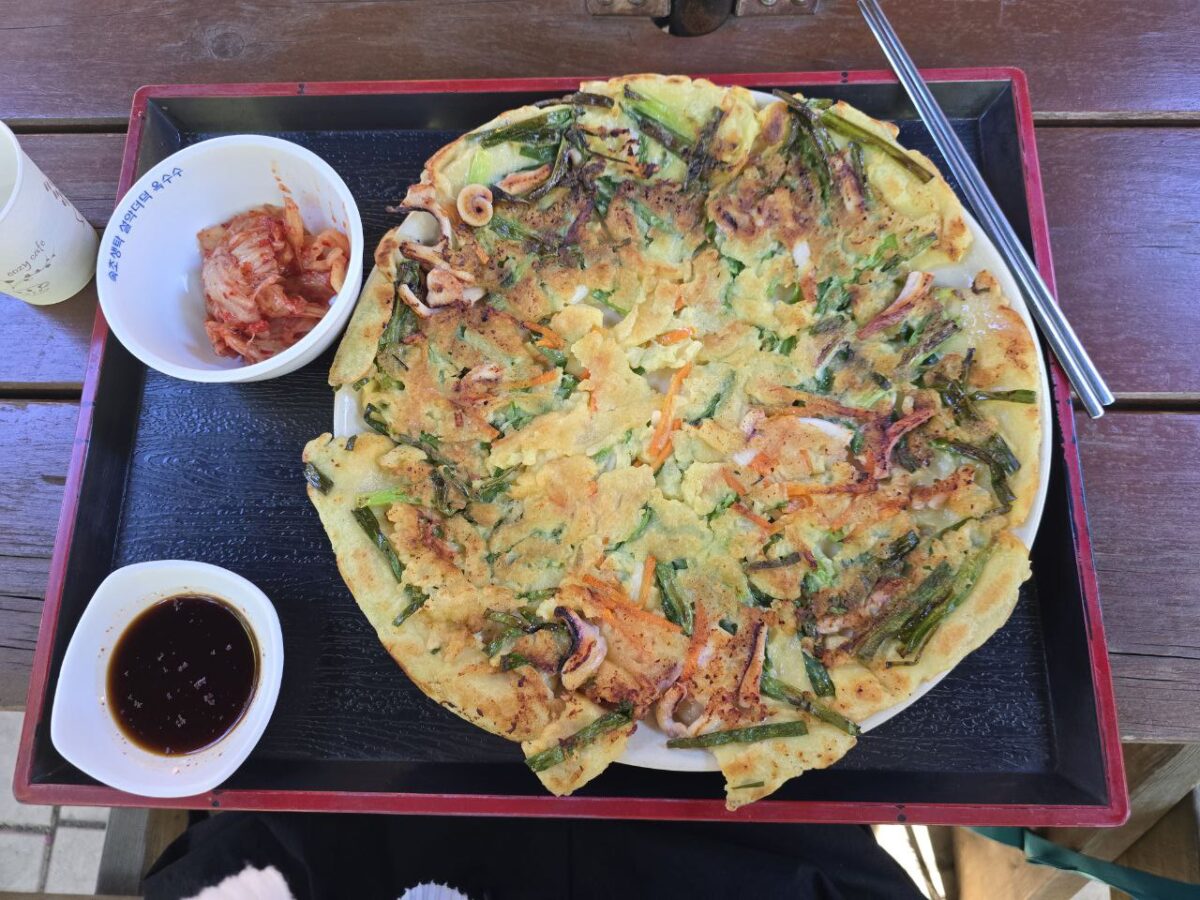
12. Haemul-pajeon (해물파전) – My favorite post-hike meal, a crispy, savory seafood and scallion pancake made with a light batter and packed with shrimp, squid, or clams. These are so big and meant to be shared, but I was always by myself when I hiked so I would fatch down on this by myself hehe. Often paired with a tangy dipping sauce and enjoyed with makgeolli (Korean rice wine).
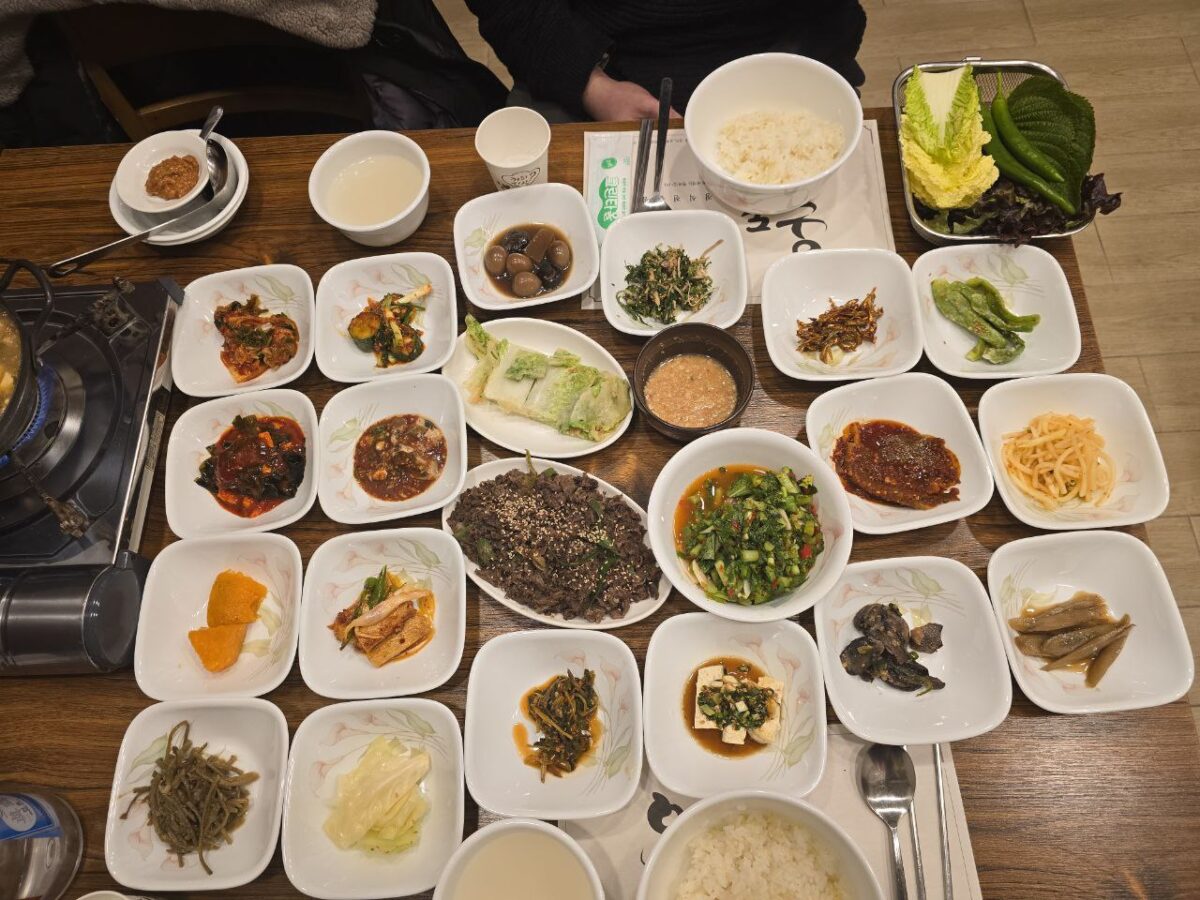
13. Hansik (한식) – traditional Korean food, hansik emphasizes balance, fermentation, and bold flavors, often featuring grilled or fried fish, soup, rice, kimchi, and a variety of banchan (side dishes). 한식 is my favorite Korean food. There’s lots of fermented veggies and I loved how with each meal I got to have a variety of little dishes. This food is very healthy and light and I always felt so nourished after eating it.
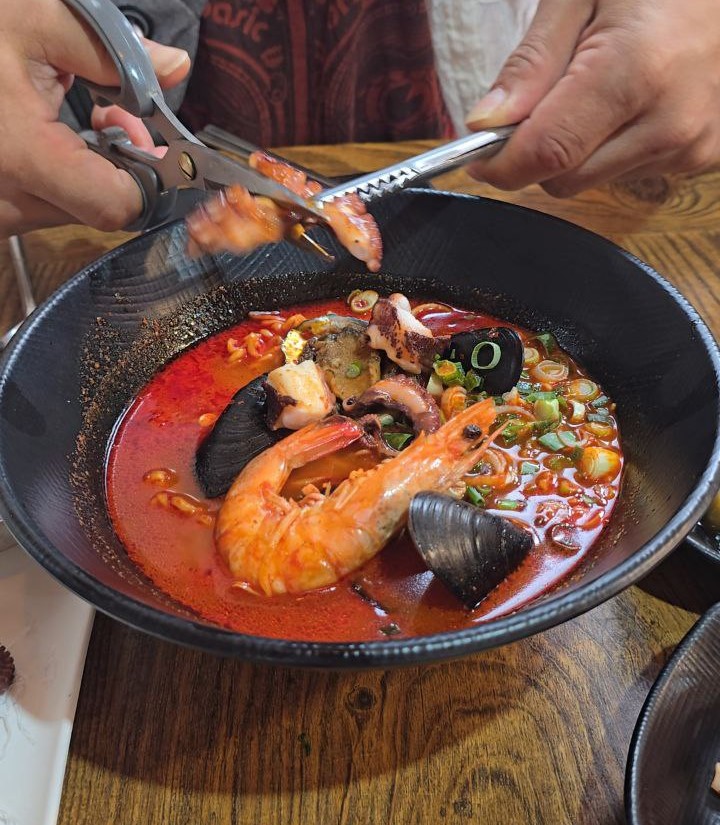
14. Haemullamyeon (해물라면) – This is ramen with a seafood twist! Haemullamyeon is a spicy, flavorful noodle soup loaded with shrimp, squid, clams, and other seafood goodies. It’s the perfect mix of rich broth, chewy noodles, and fresh ocean flavors.
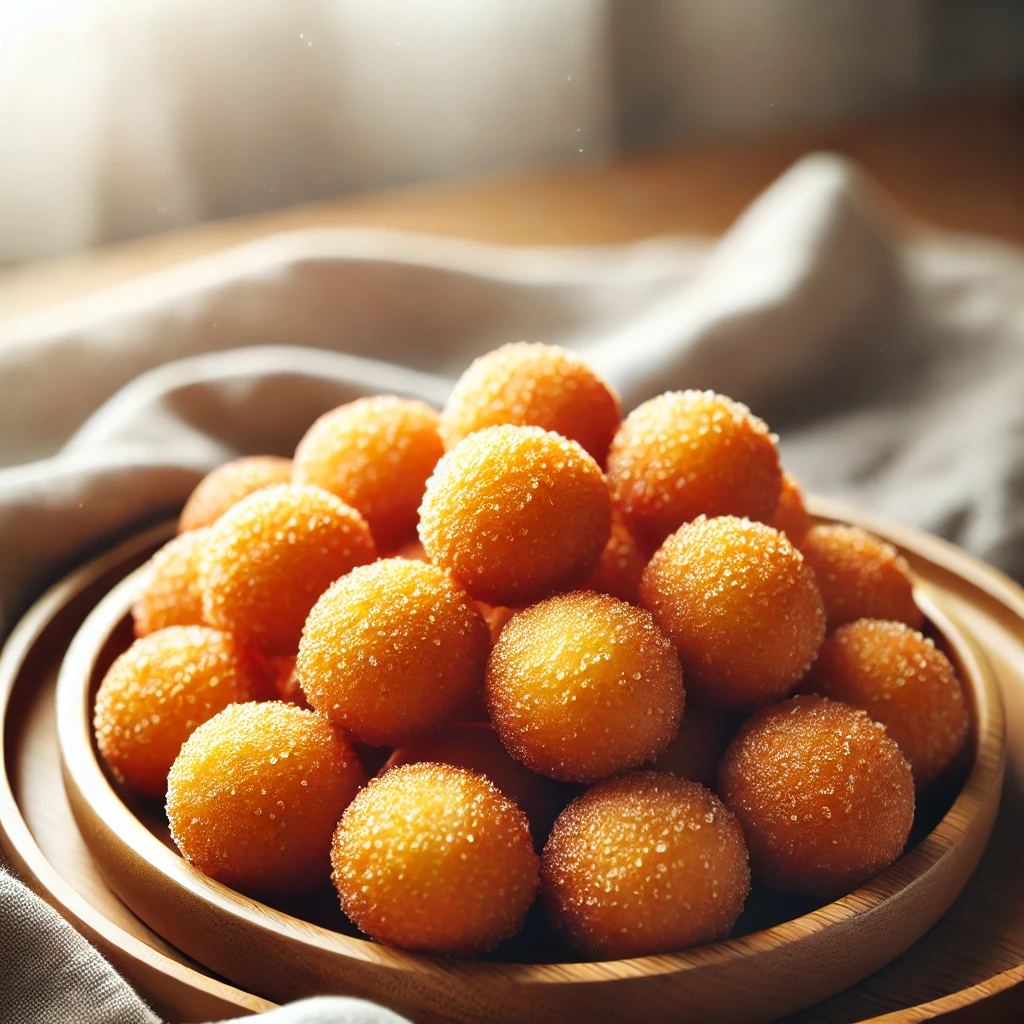
15. Chappsal (찹쌀) – okay, I know I’ve already said that like, three other things are my favorites at this point, but chapssal is actually my all-time favorite Korean dish. It’s not really a dish as much as it is a dessert, but let me tell you it is so dang delicious. Essentially, it’s a rice/gluten donut ball that’s fried. It’s crispy and light on the outside + super dense and chewy on the inside. Red bean filling and sugar topping is popular, but I prefer them with no filling and no sugar. I would actually buy these from little vendor stalls at markets and take them home and put salt on them, for the ultimate salty-sweet combo.
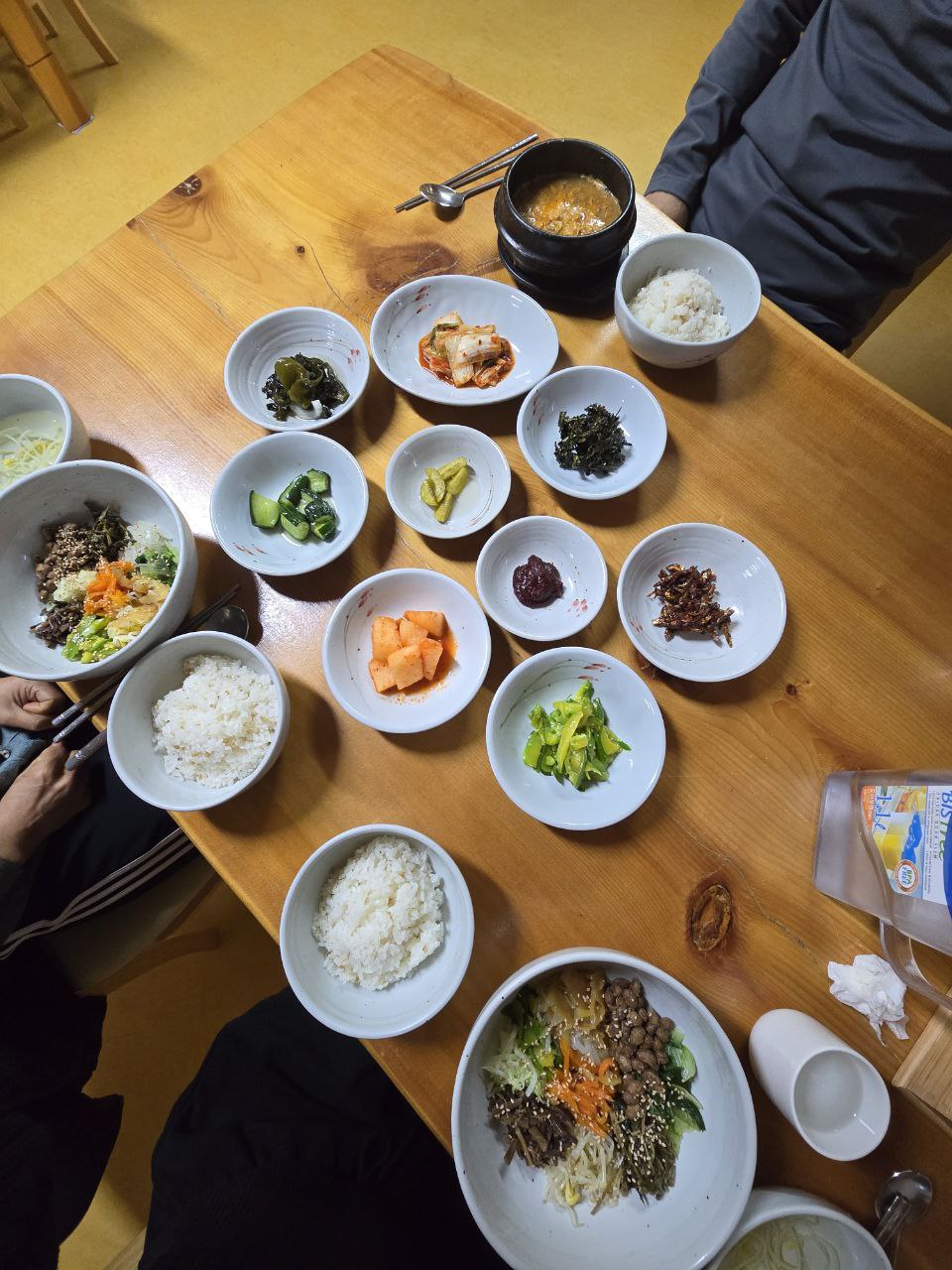
16. Bibimbap (비빔밥) – A colorful and nutritious dish featuring a bowl of warm rice topped with assorted vegetables, marinated meat, a fried egg, and a generous dollop of gochujang, all mixed together for a perfect balance of flavors and textures. Usually there’s very little meat in this dish, and a big emphasis on the veggies. You must stir the gochujang in all the way, otherwise the 아줌마 (middle-aged ladies), will scold you and tell you to mix it better. Lolol this actually happened to me.







